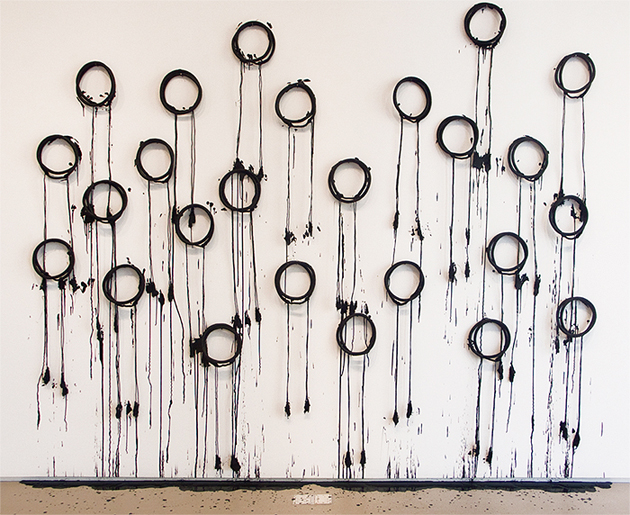Mounir Fatmi (b. 1970, lives and works between Paris and Tangier) is a well-known Moroccan-born artist who exploits film, drawing, painting, sculpture, installation and linguistic games – pushing the boundaries of all these media – to investigate and underline geopolitical, socio-economical and cultural dividers in different contexts. Thanks to the use of an extremely direct and visual language, along with a strong ironic tension and dark humor, Fatmi explores the complexity of both western and eastern worlds, pointing out their respective belief structures and ideologies. Working on the issues of identity and alterity, he refers to the worldwide current events, making use of traditional and contemporary symbols of religions (Christianity, Judaism and Islam) and power systems to reveal their fallacies and stereotypes. As an exercise of free thinking, the works by Fatmi frankly present to the viewers some selected objects, which embody and help to create metaphors of people’s doubts, fears, prejudices, or easily of their awareness, leading the viewers to a deeper reflection: jumping poles, horse jumping hurdles, books, VHS Cassettes, unwound films and intertwined cables are just some of the devices that recur in Fatmi’s works.
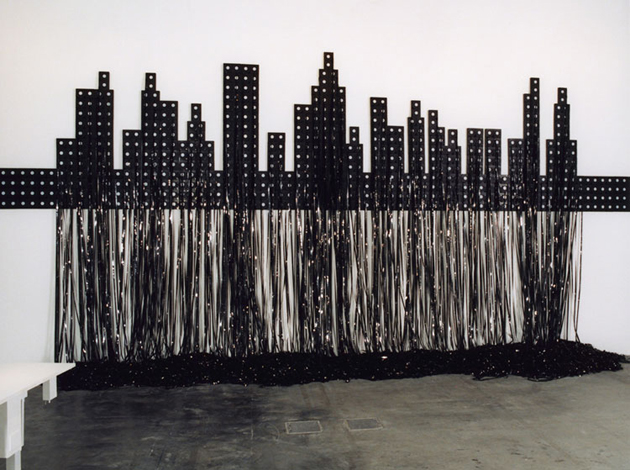
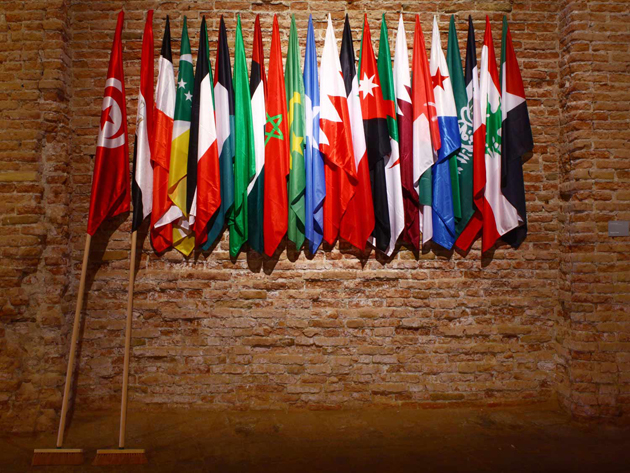
In Pique-nique sous embargo (Picnic under embargo, 2003) the artist seems to give birth to a place of encounter, apparently recreational, which conveys instead political and humane themes (as suggested by the title) the viewers are encouraged to think about; while in Save Manhattan 01 (2004), he re-creates Manhattan’s pre-9/11 skyline through the use of religious books – reflecting their silhouettes as shadows on the wall –, all published after September 11th with the exception of the two volumes of the Koran that emblematically stand for the Twin towers.
The electric chair of Gardons Espoir (Keeping Faith, 2007), made of VHS cassettes that design a minimal and optical composition, is in dialogue with the Warhol’s famous namesake, provocative work, generating ambiguity – the centre gets lost –, and recalling our ambivalent relation with death: fear and obsessive fascination. Arabian and Western culture meet in Maximum Sensation (2010) where fifty skateboards were covered with Islamic prayer rugs representing cultural hybridity that he personally experienced, but with a kind of blasphemy. Among the numerous works, which are worth to be considered, we cannot avoid mentioning Les Printemps Perdus (The Lost Spring, April 2011), an extremely essential and poetic installation consisting of the 22 flags of the Arab League placed against the wall. All the flags are sustained by poles except from the Tunisian and Egyptian ones that are on two brooms, referring to the revolts and the falls of Ben Ali and Mubarak; events seen as “domestic works” through which sweeping up the dirt, cleaning the context to renovate and restore: “Who’s next? Where else needs to be swept clean? Where is the rubbish hidden?”. Evil is contemporary and everywhere, even close to you, just remember to face it now and then.
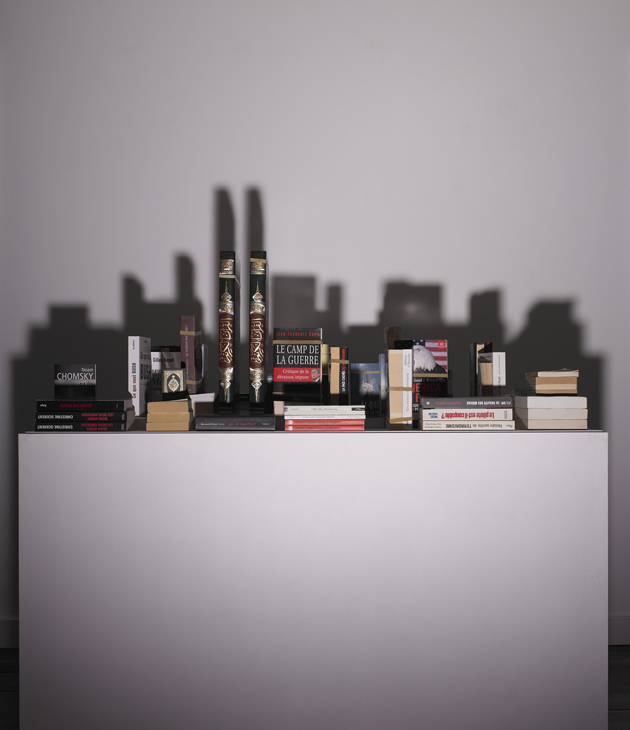
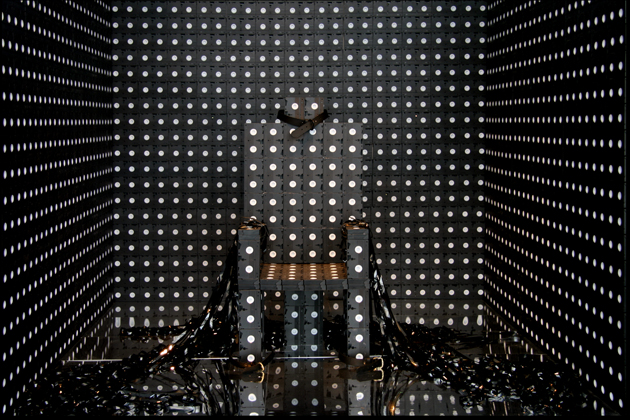
The works by Mounir Fatmi are currently on view at: Palais des Evêques (thru 11th November); The Mediterranean Biennale (thru 30th September); MAC (thru 20th October); MAXXI (thru 29th September); Keitelman Gallery (thru 31st October); Art International Istanbul (thru 18th September), and more has to come.
